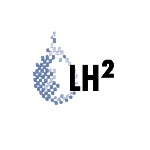- Description
-
The development of new alternative power sources/supplies is an important task nowadays. PEM (polymer electrolyte membrane) fuel-cells currently are intensively investigated and improved for applications, for example, in electrical vehicles. In order to make this technology competitive to fossil energy supply, it is necessary to improve its performance. This requires a profound understanding of all physical and electrochemical processes in fuel cells. It has been found that the kinetics of the oxygen reduction reaction at the cathode is a limiting factor for the performance of fuel-cells. The transport of oxygen to the cathode through its porous diffusion layer occurs in a predominantly diffusive manner. The generation of liquid water at the cathode-site of the reaction and the presence of stagnant nitrogen (if the cell is operated with air) constrain this oxygen transport to the reaction layer. Thus, the water management in the cathode diffusion layer must be optimised in order to improve the performance of the fuel-cell.
Understanding the behaviour of the multiphase multicomponent system in the cathode diffusion layer requires still some fundamental research work. A crucial issue is the wettability of the porous skeleton. The material consists, for example, of a carbon fibre structure hydrophobized with Teflon. Hydrophobic properties enhance the removal of the generated liquid water. However, it has been observed that, under operating conditions, at least parts of the diffusion layer become hydrophilic and retain liquid water in higher residual saturations. This significantly changes the hydraulic properties which is extremely annoying for numerical models.
Another difficulty for numerical models is the description of the boundary conditions at the interface between the gas channels and the diffusion layer. The gas channels (gas distributor) on the one hand provide the oxygen and on the other hand transport the water away from the diffusion layer. The architecture of the gas distributors can be conventional or inter-digitated. A conventional gas distributor provides an equally pressurised gas flow along the interface to the diffusion layer. Consequently, the gas flow is mainly diffusive. In contrast to that, in an inter-digitated configuration, the pressure of the gas on both sides of the shoulder is different and the gas is advectively forced through the diffusion layer. In both cases, the water saturation as well as the water flux across the interface into the gas channels change during the operation. This is a serious problem for the correct assignment of Dirichlet or Neumann boundary conditions.
- Project manager
-
Class, Holger
Helmig, Rainer - Research assistant
-
Ochs, Steffen Oliver
- Department
-
LH2
- Duration
-
01/2007 - 09/2008
- Funding
-
International Research Training Group NUPUS / German Research Foundation (DFG)
- Cooperation partners
-
Prof. Ulrich Nieken, ICVT, Uni Stuttgart, Prof. Hans Bruining, TU Delft
Contact



